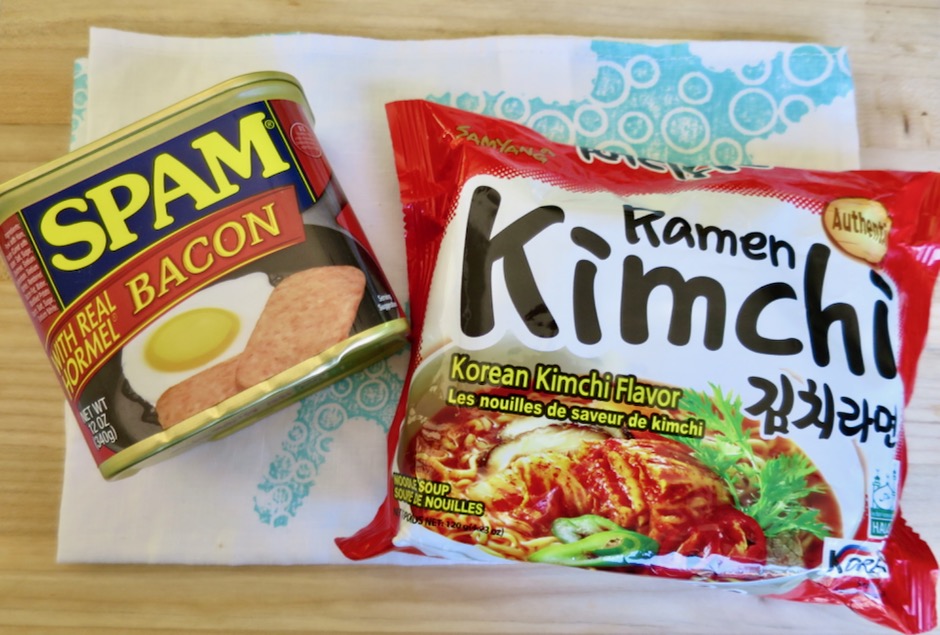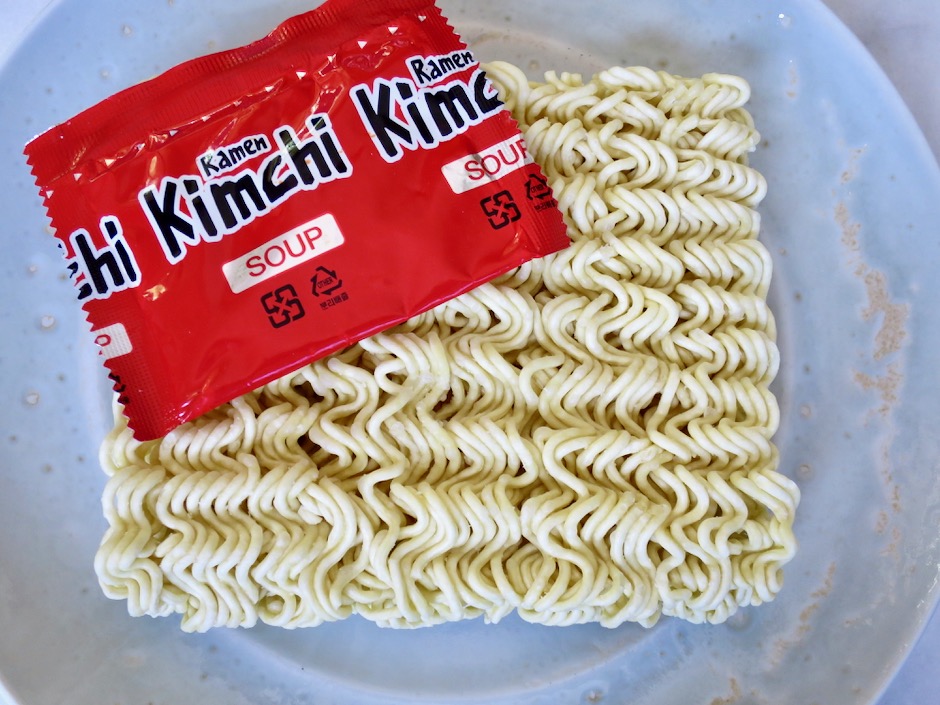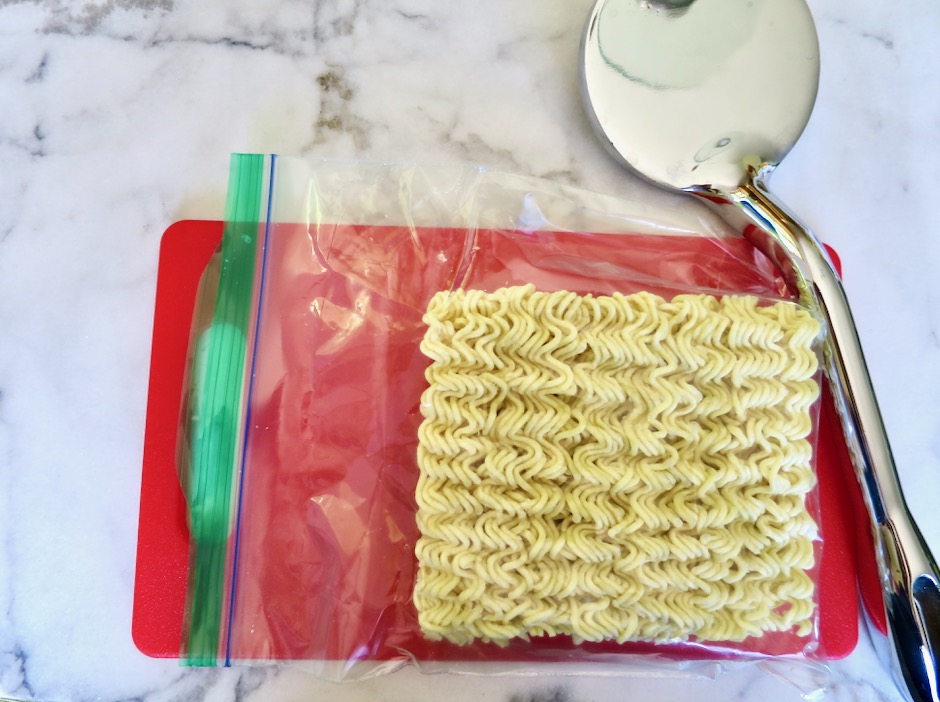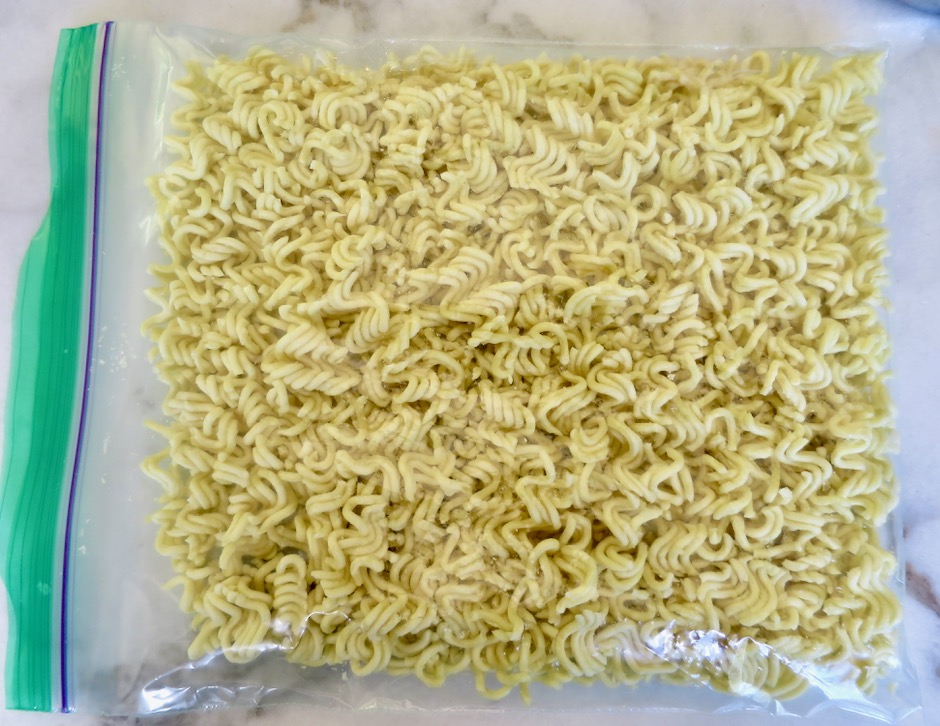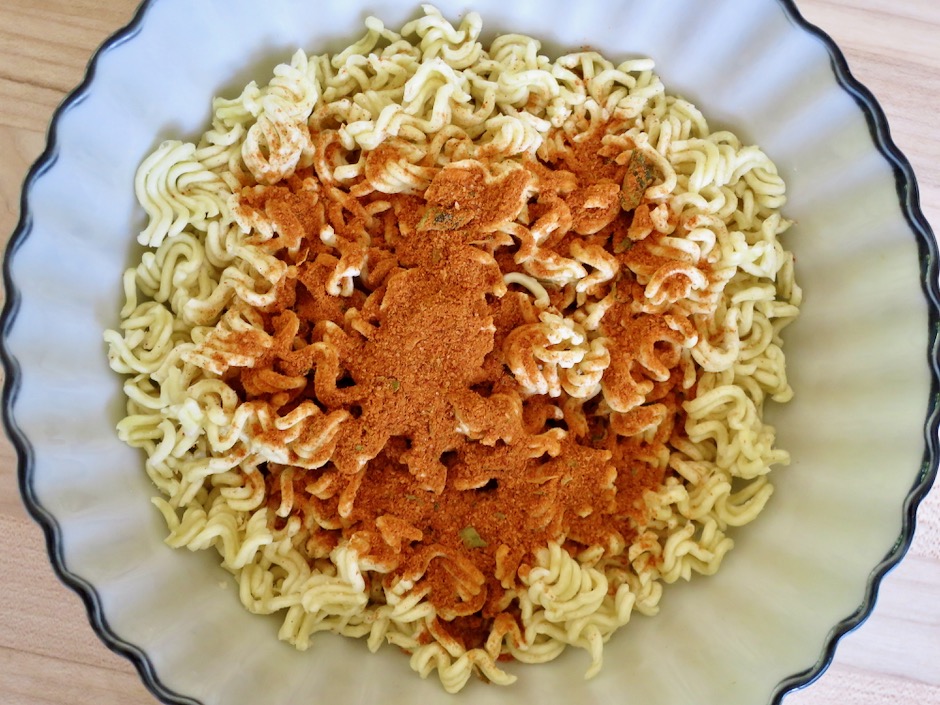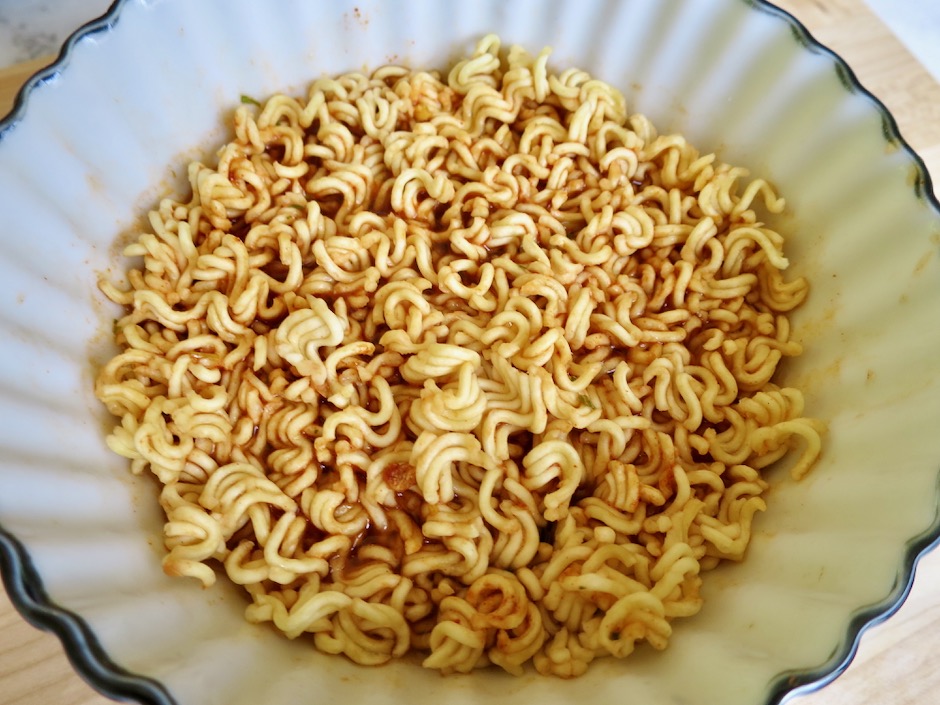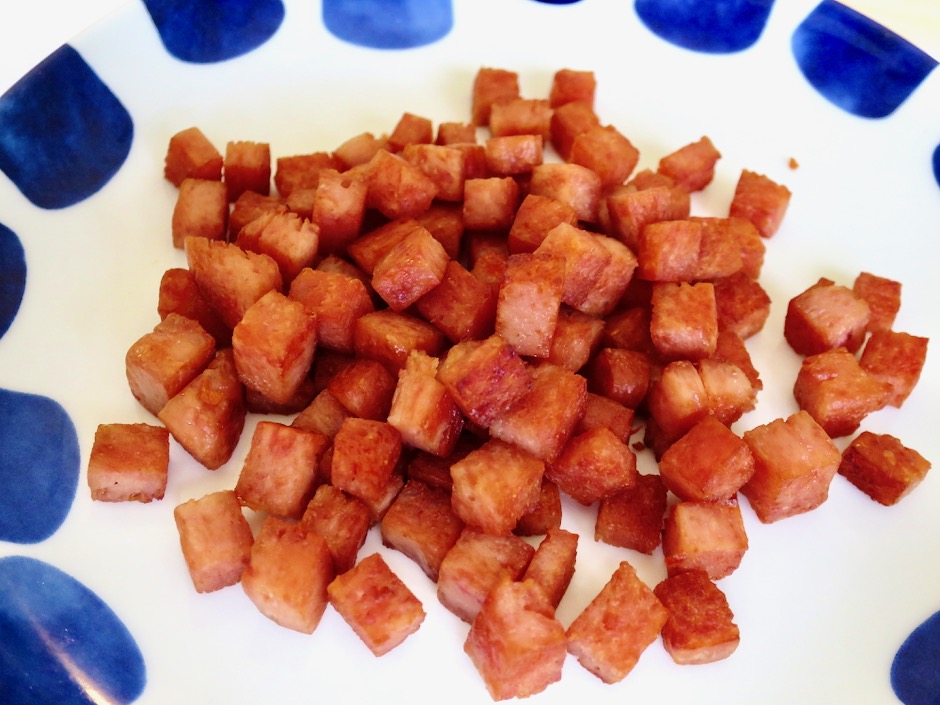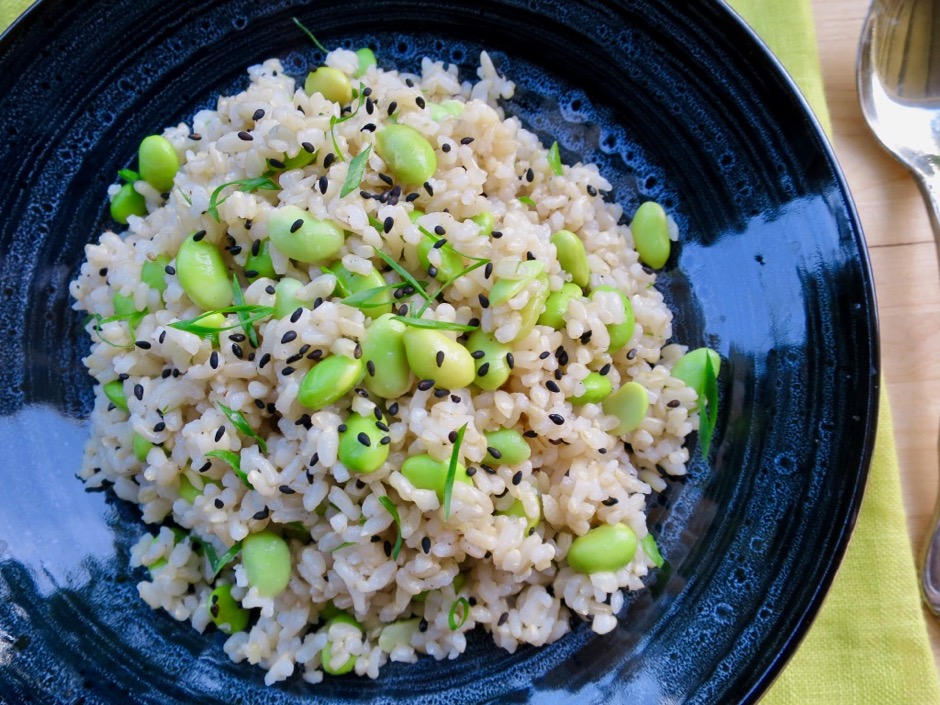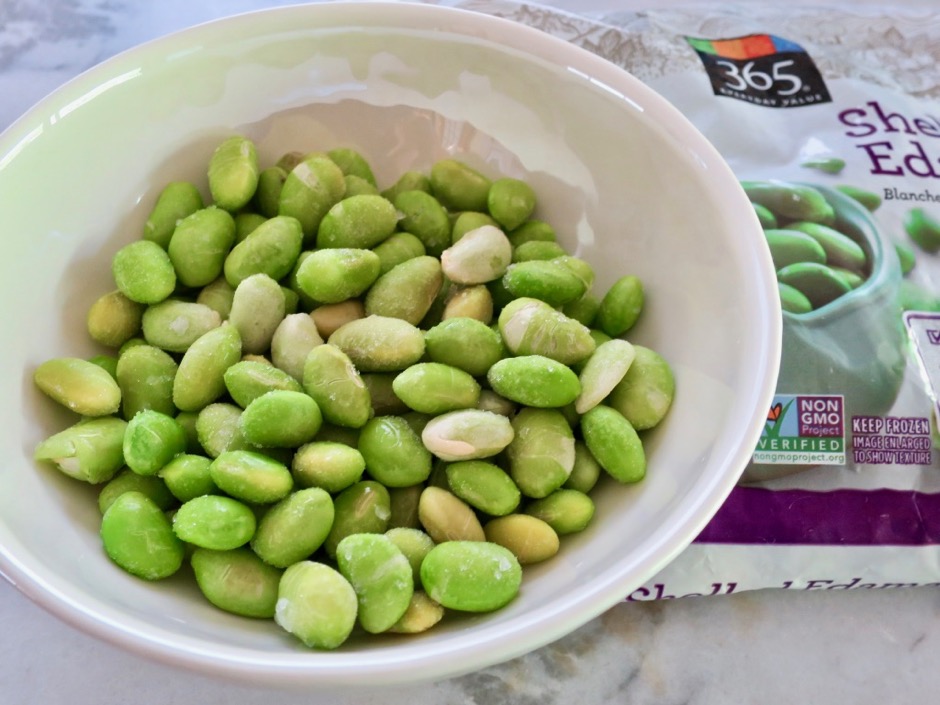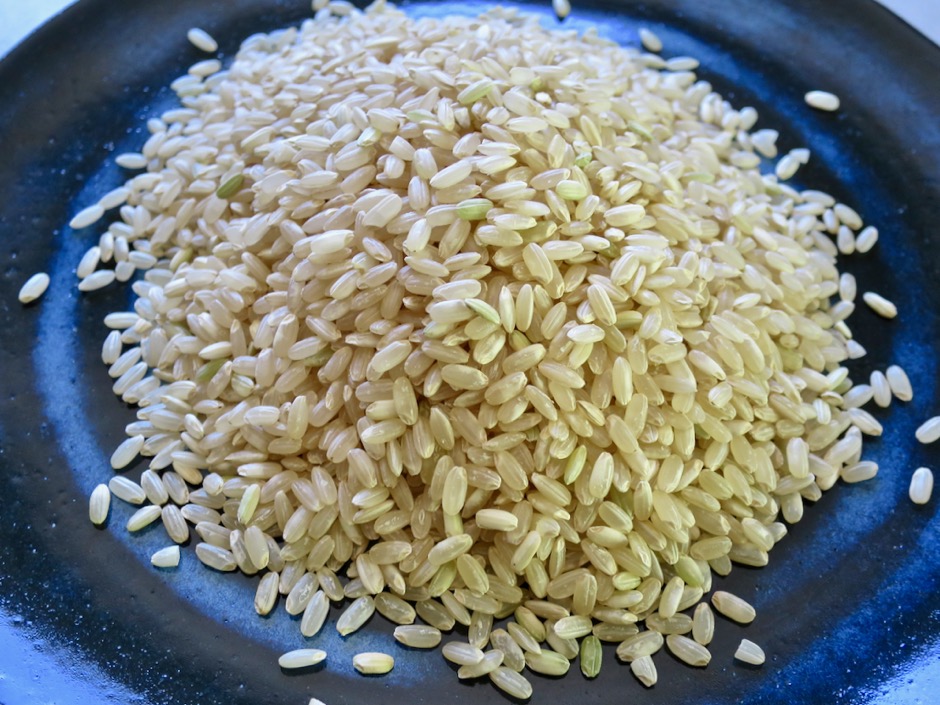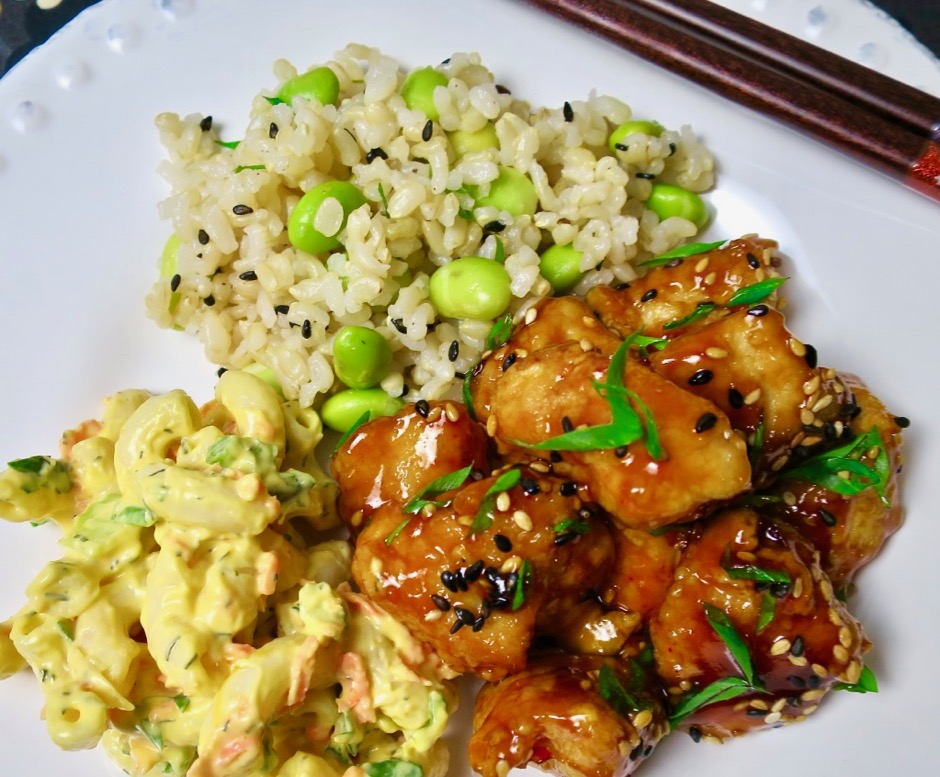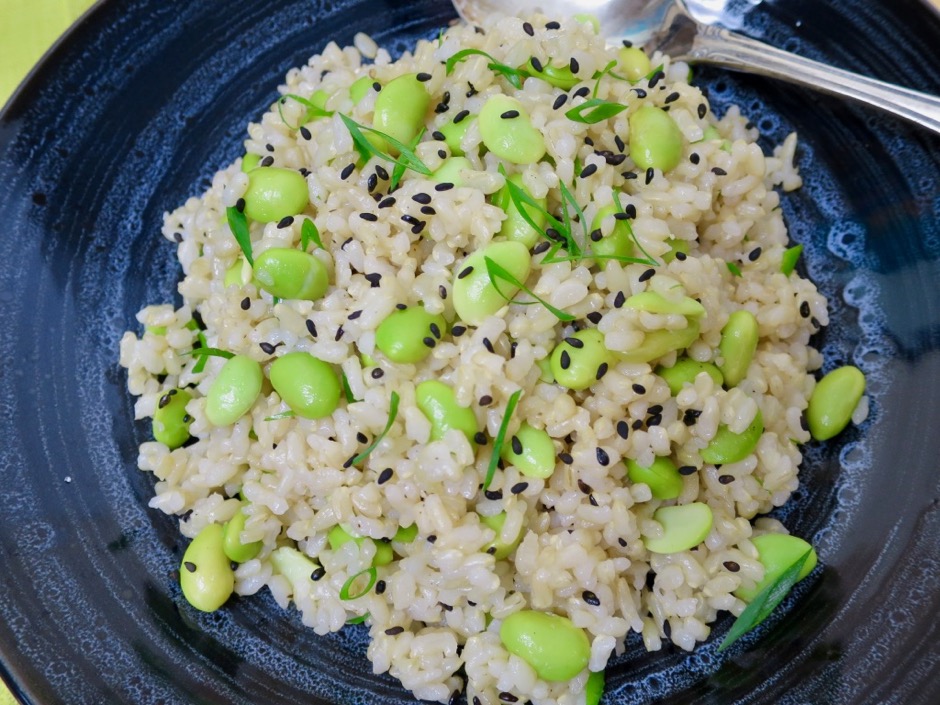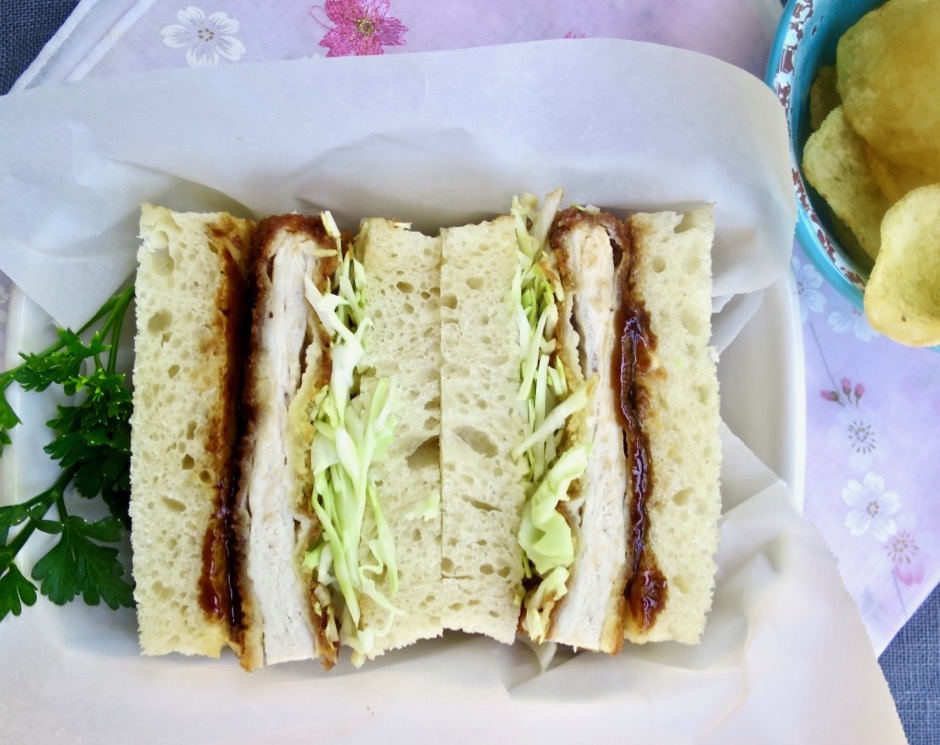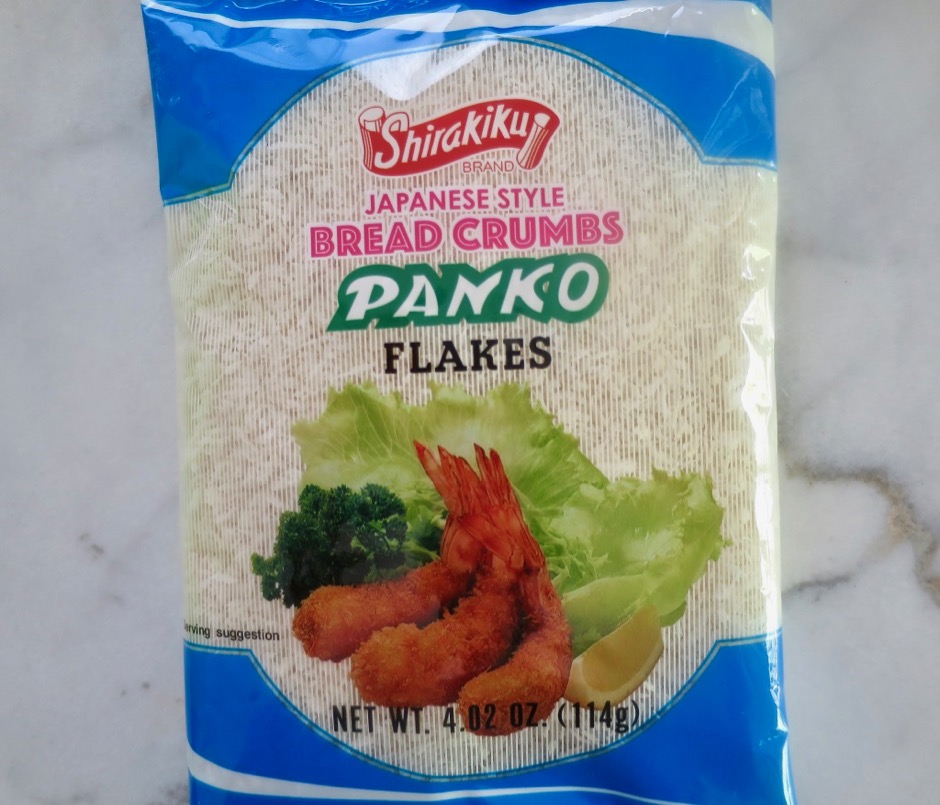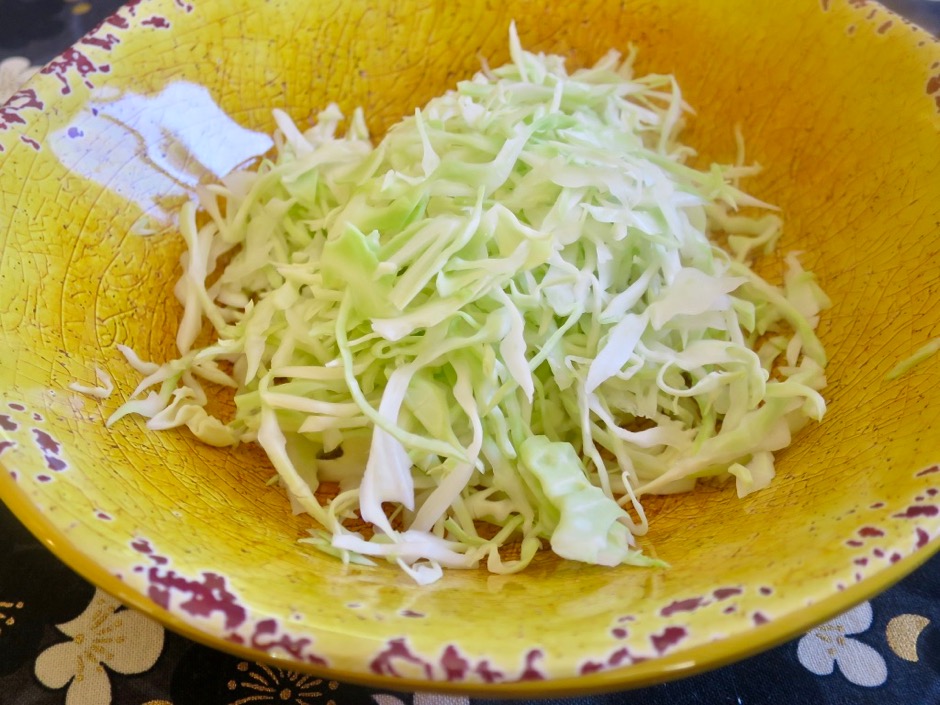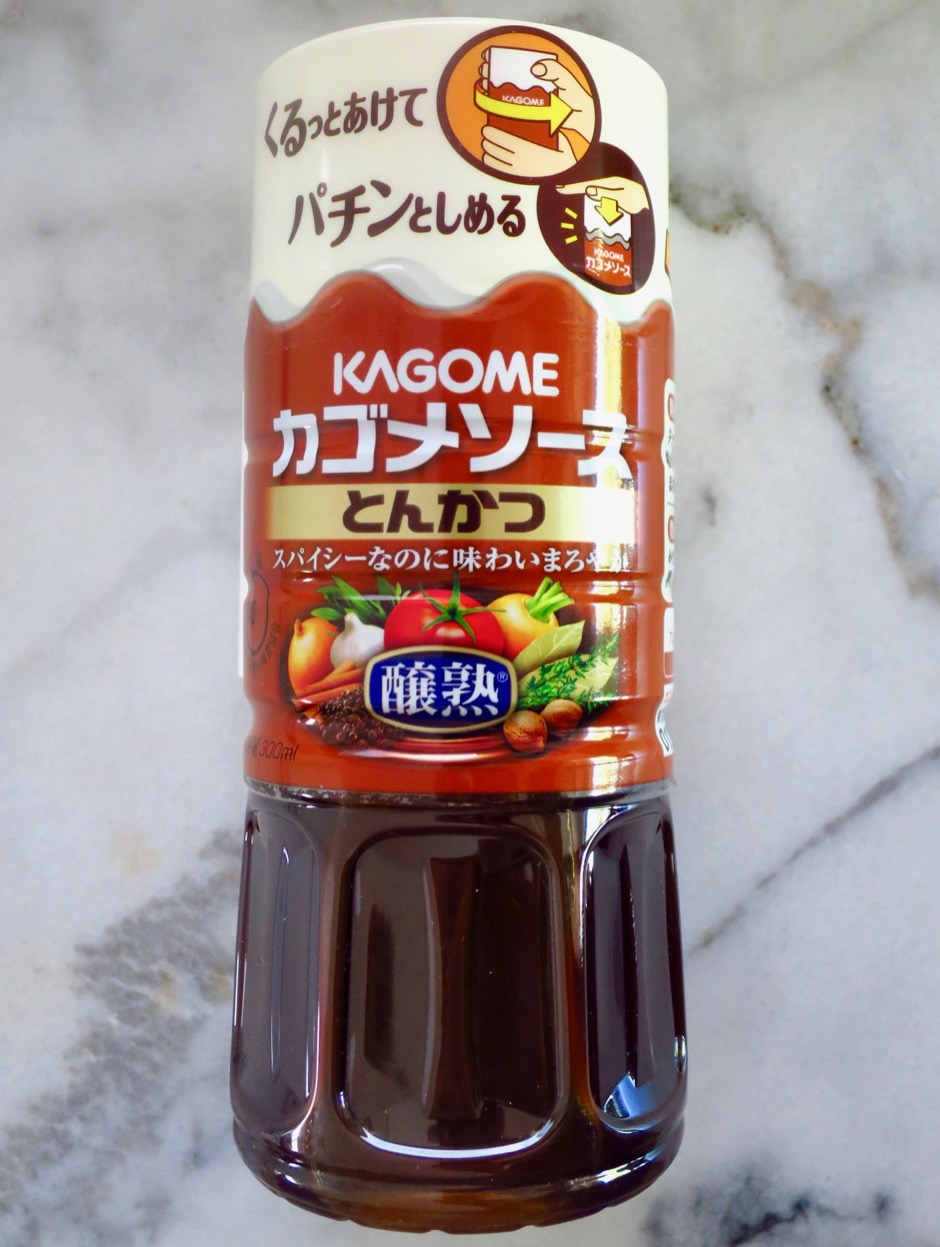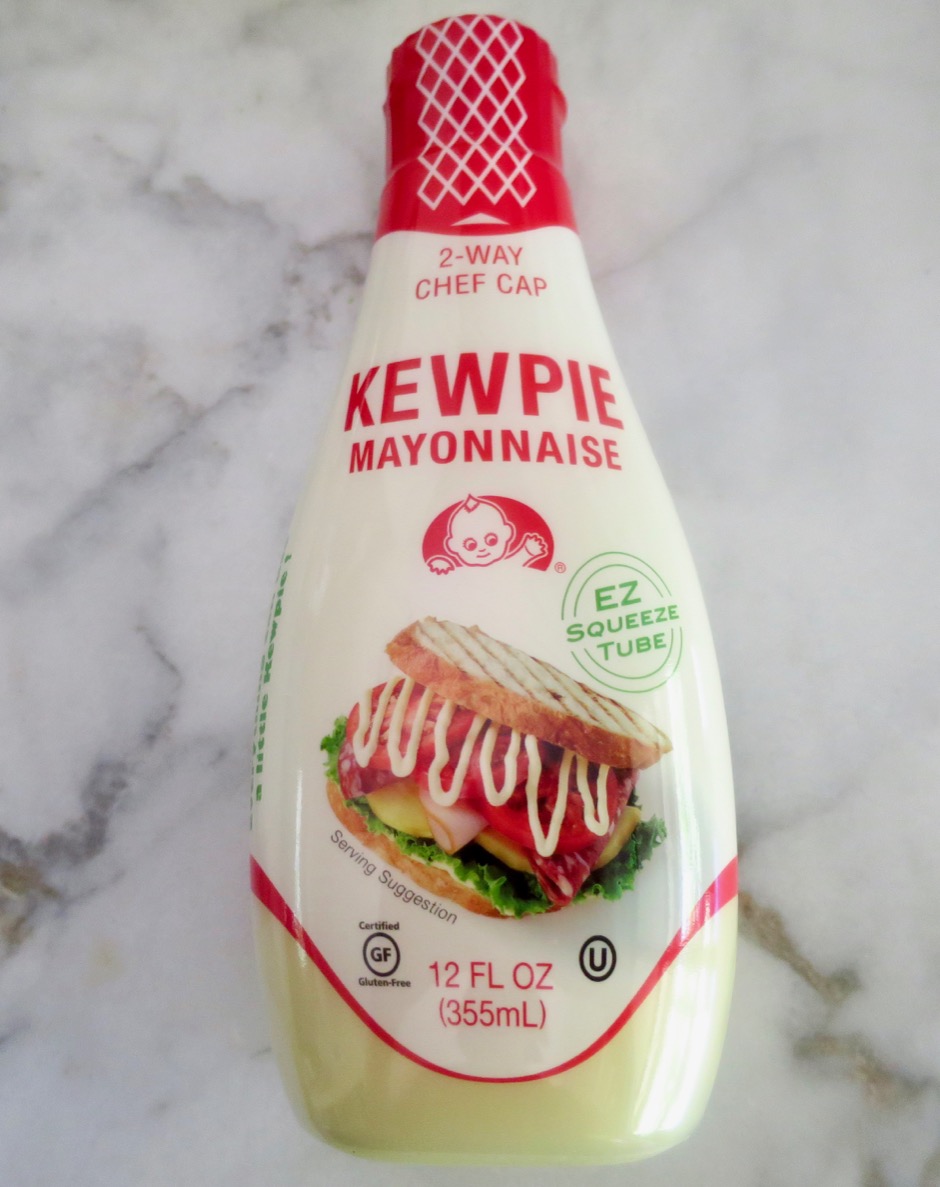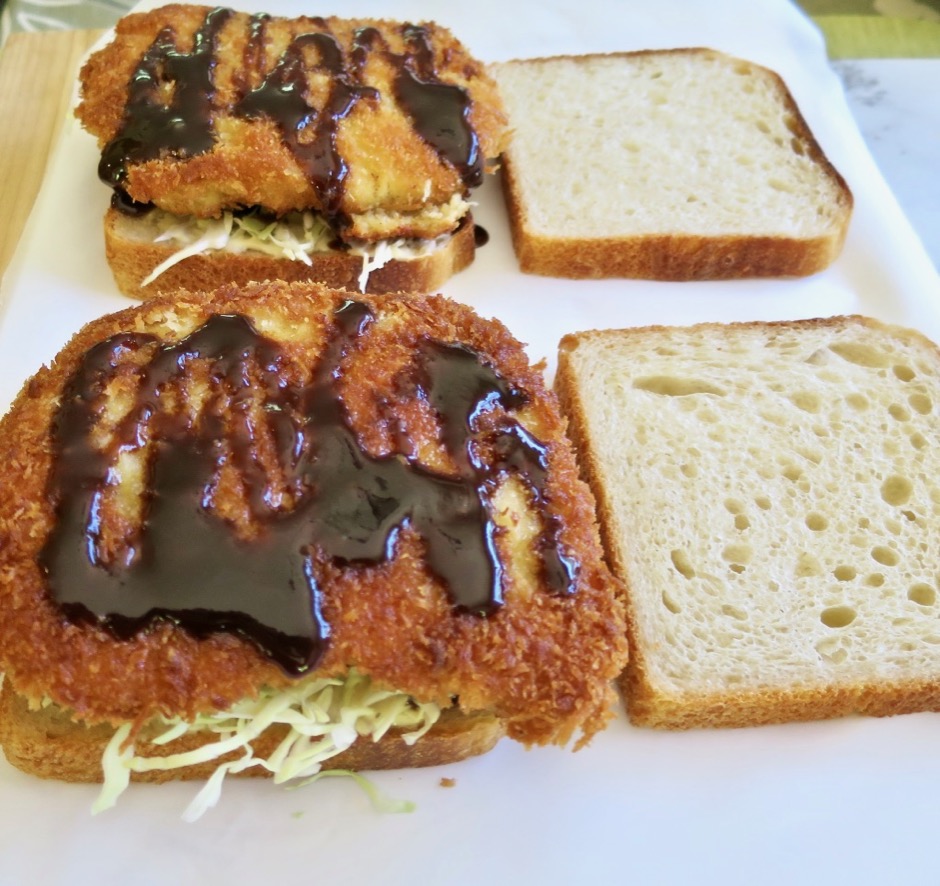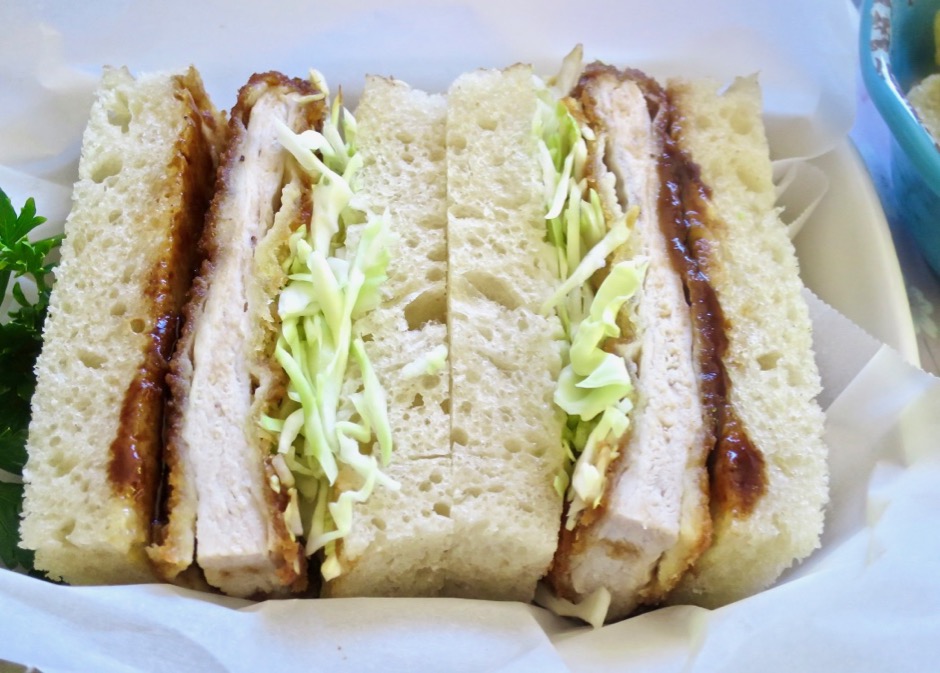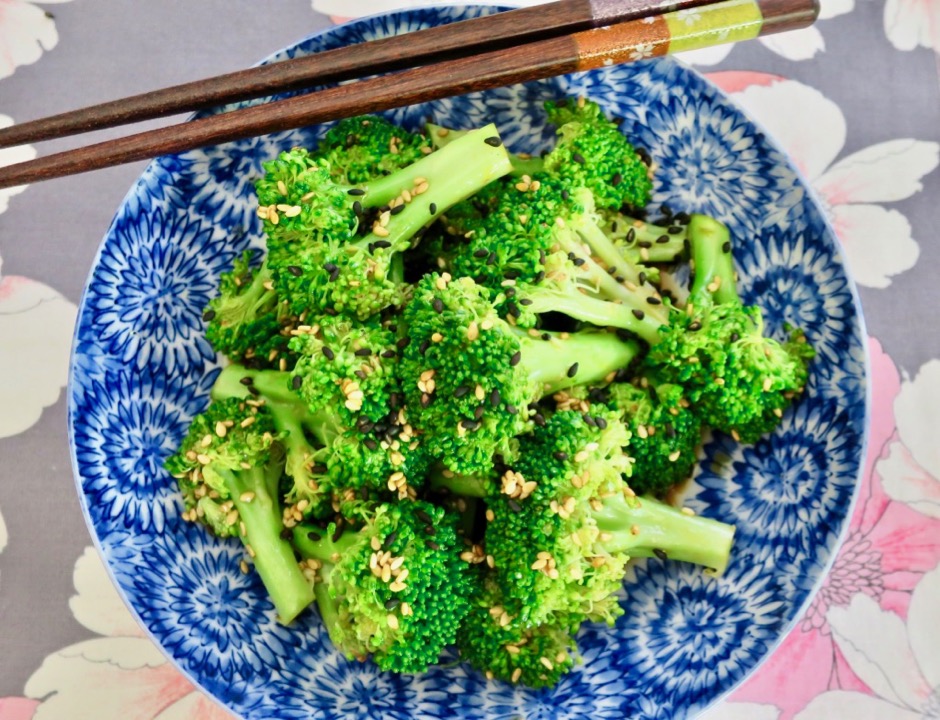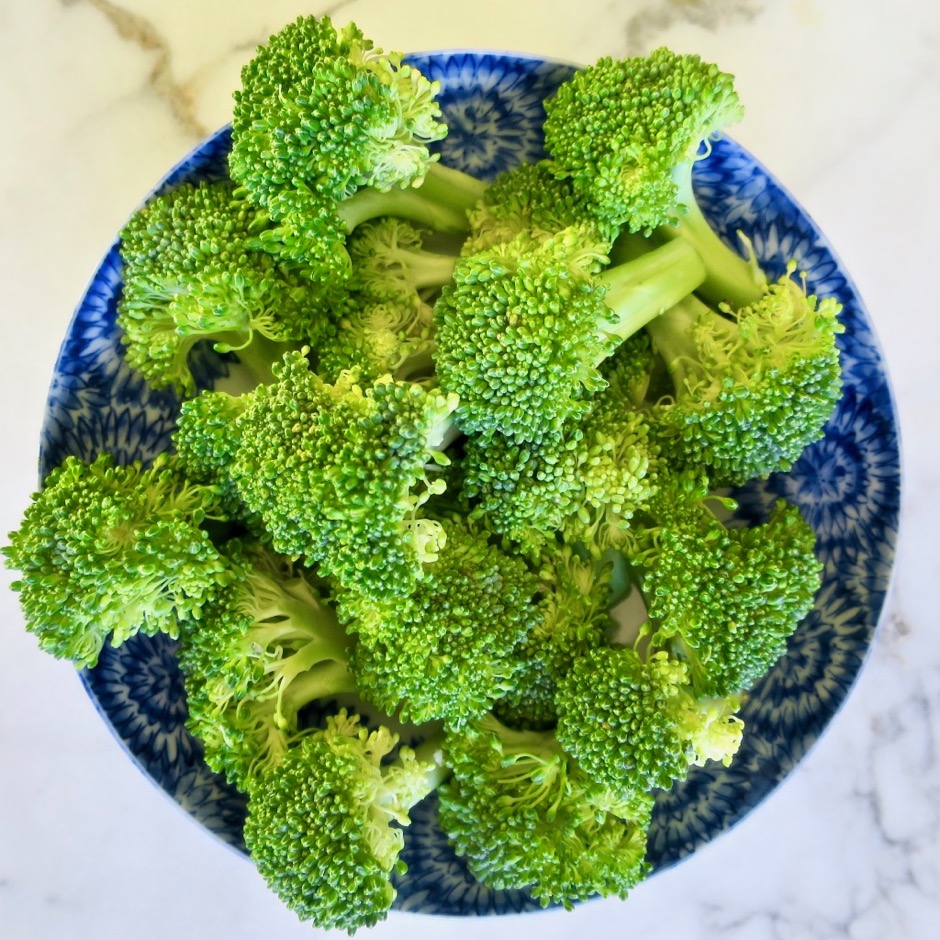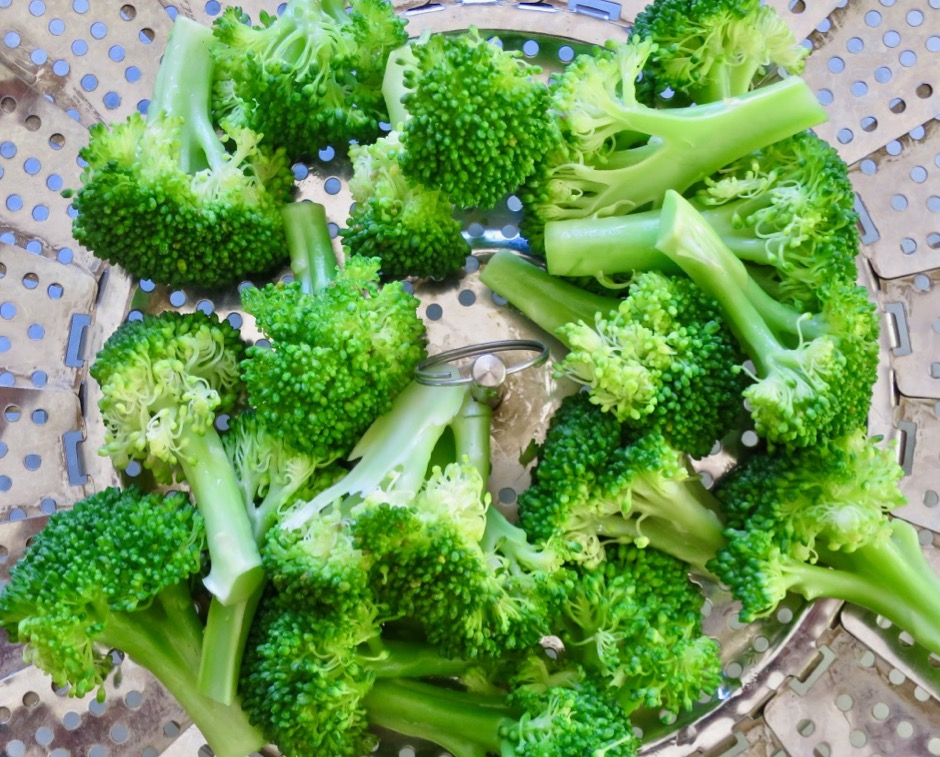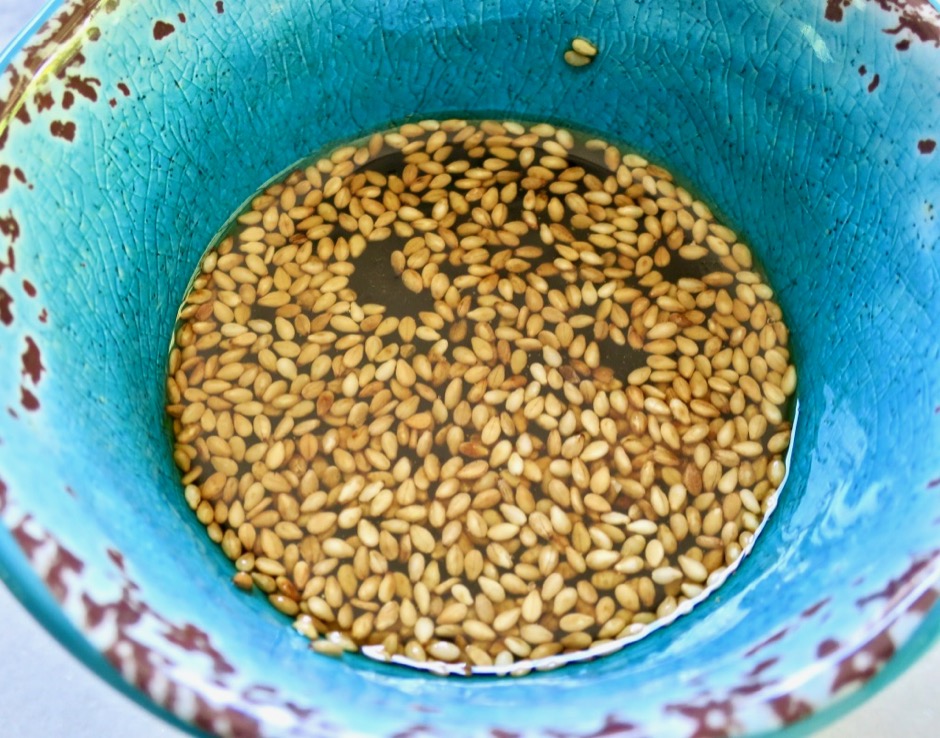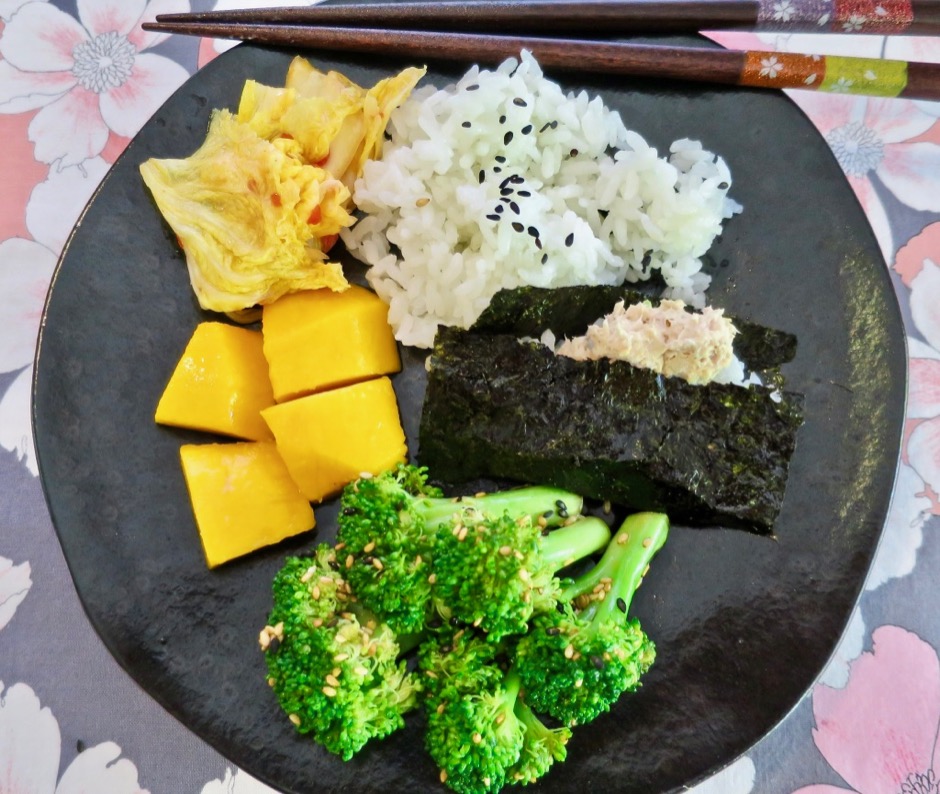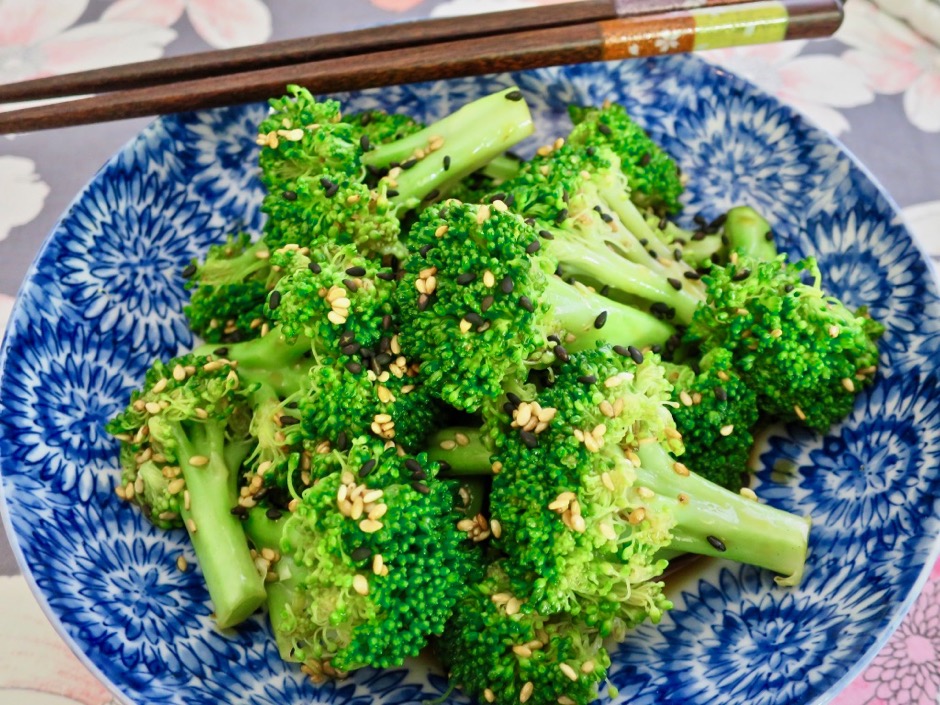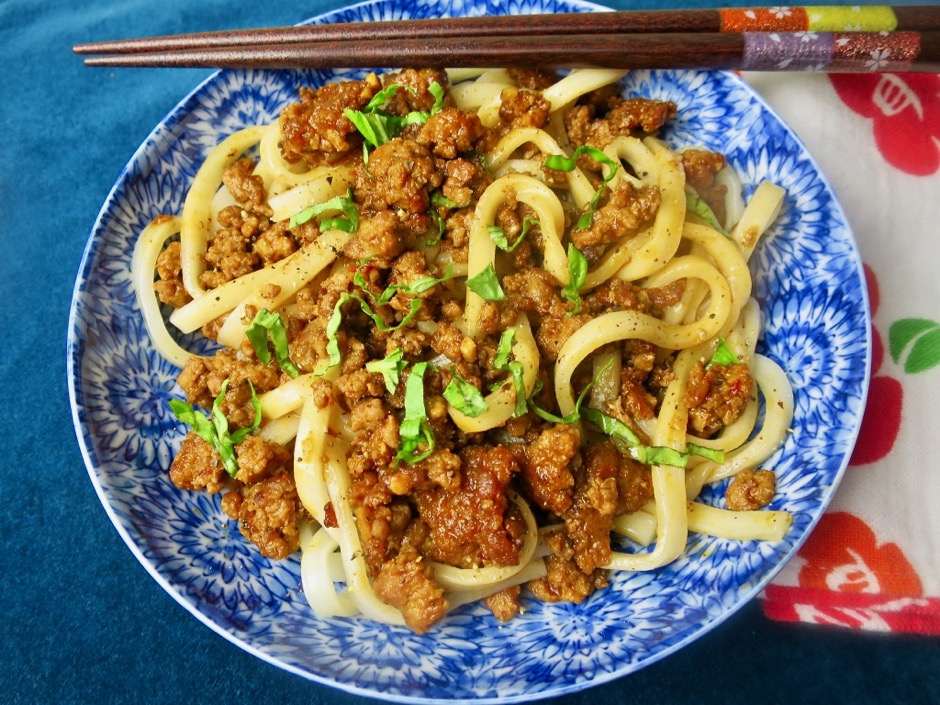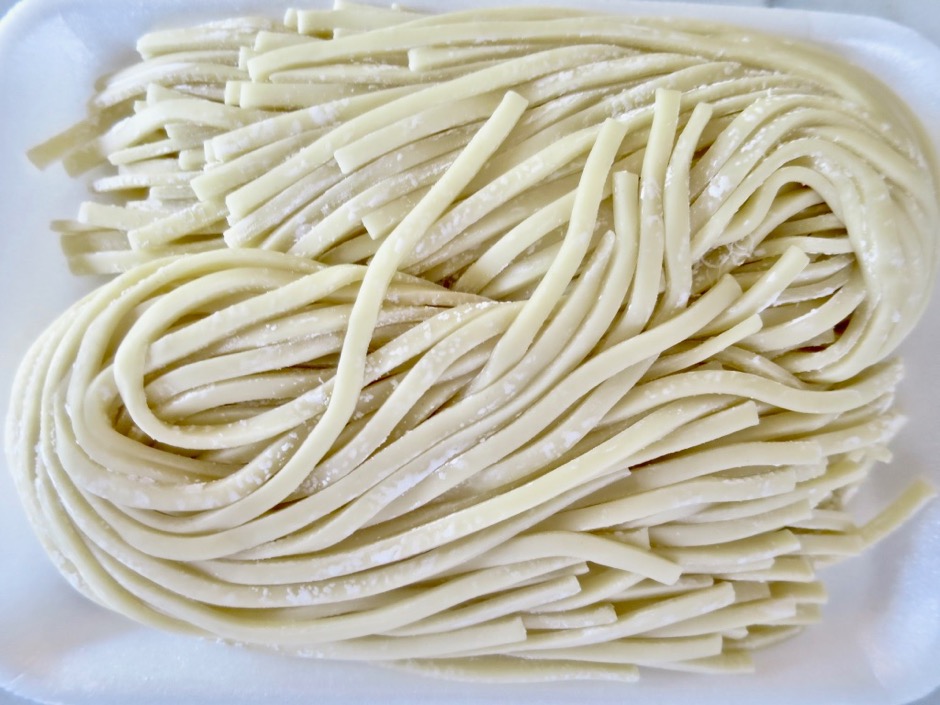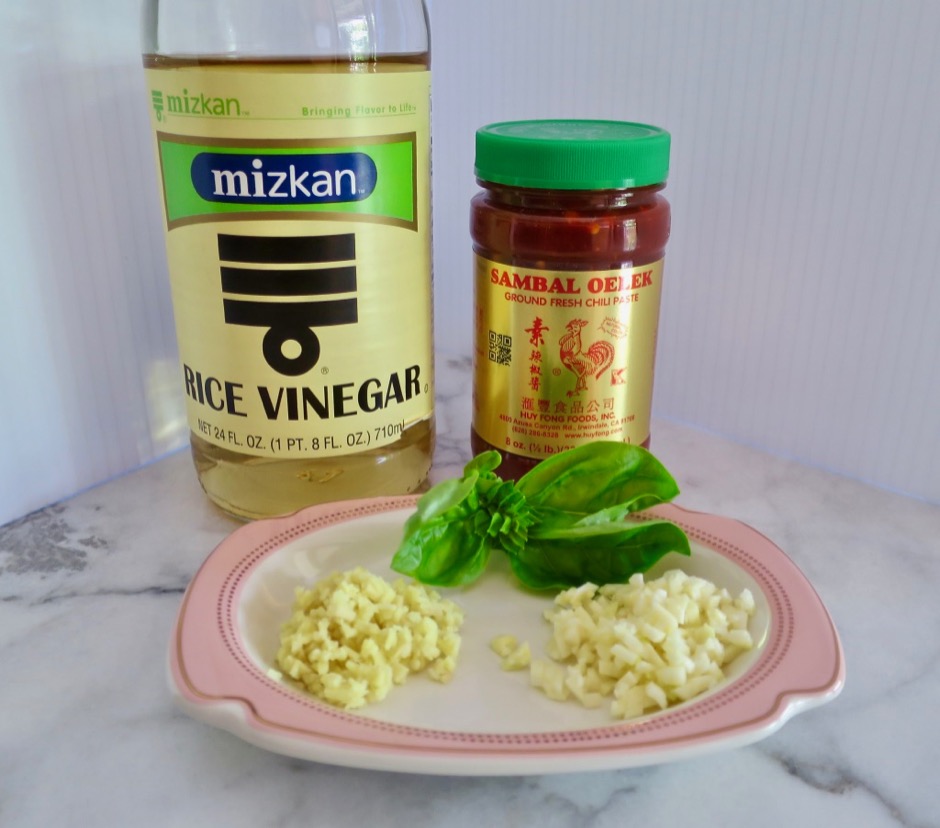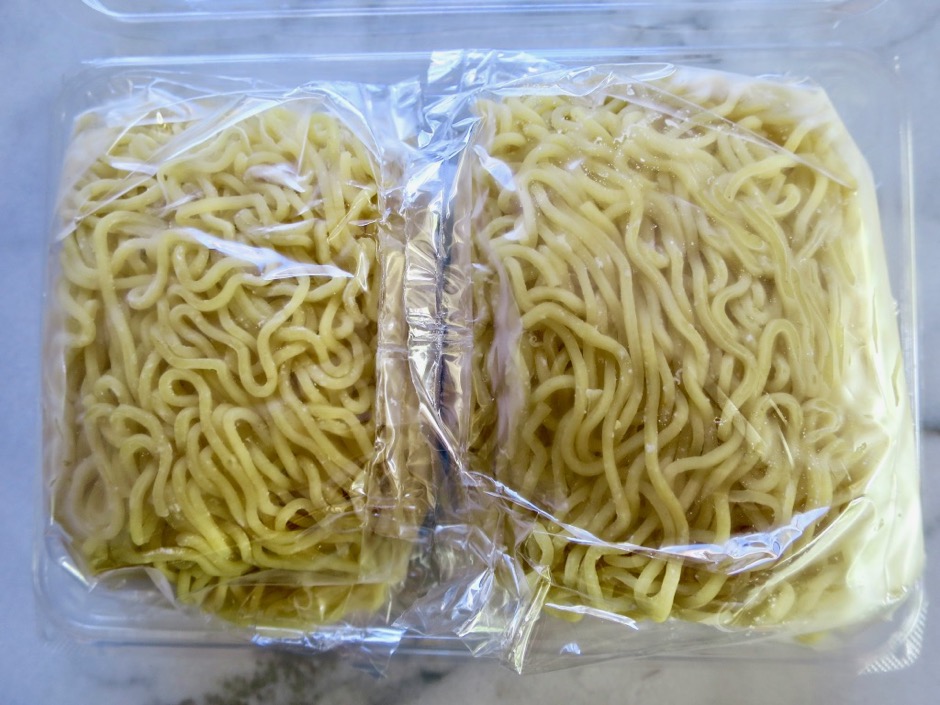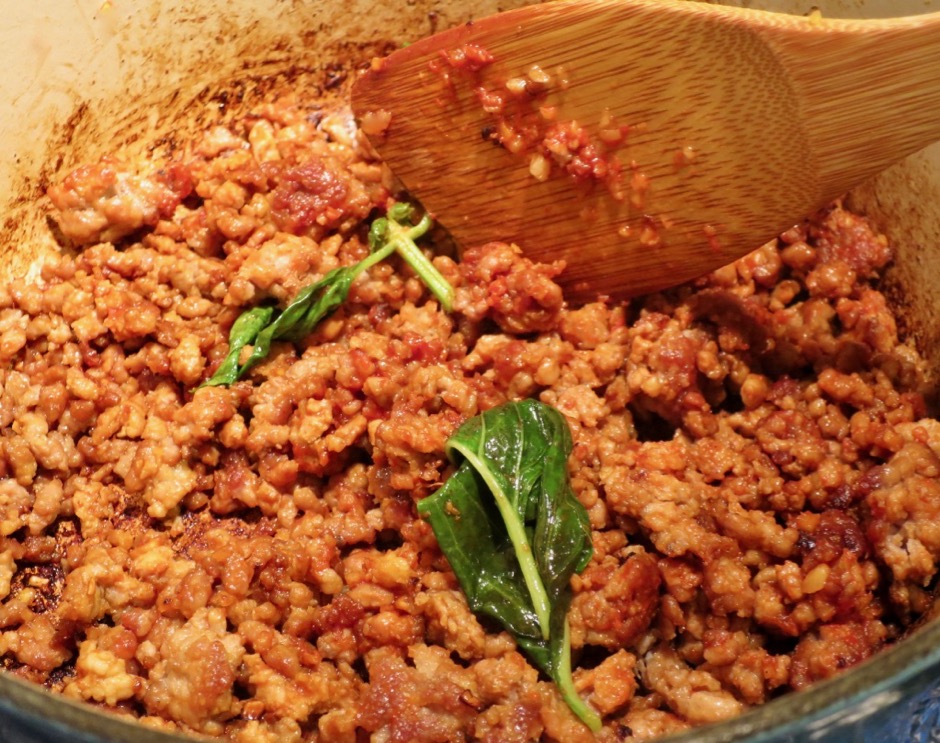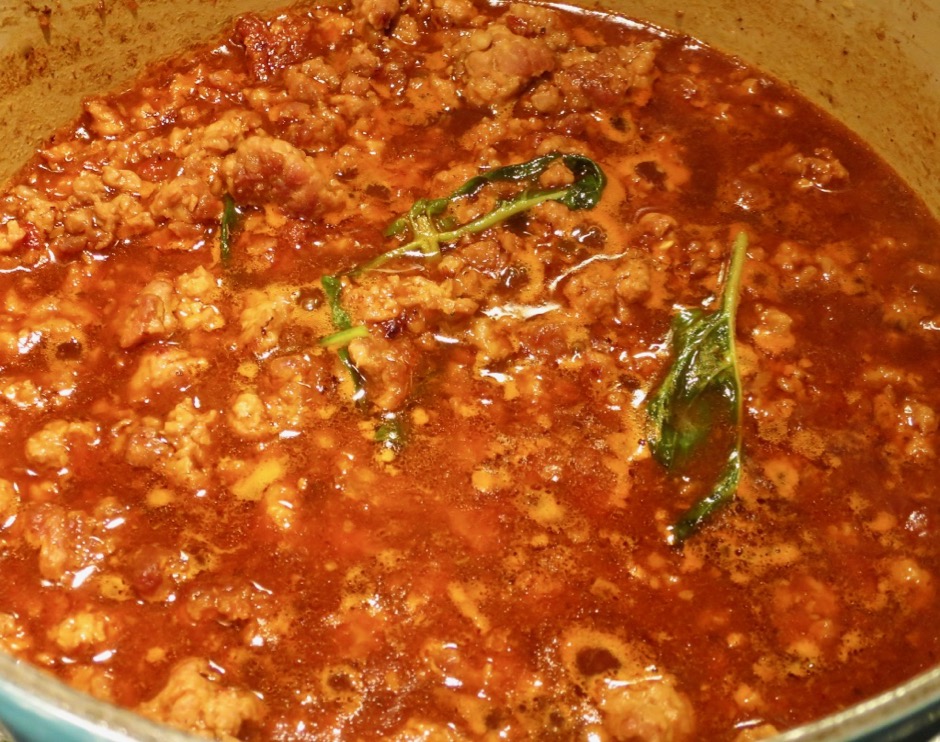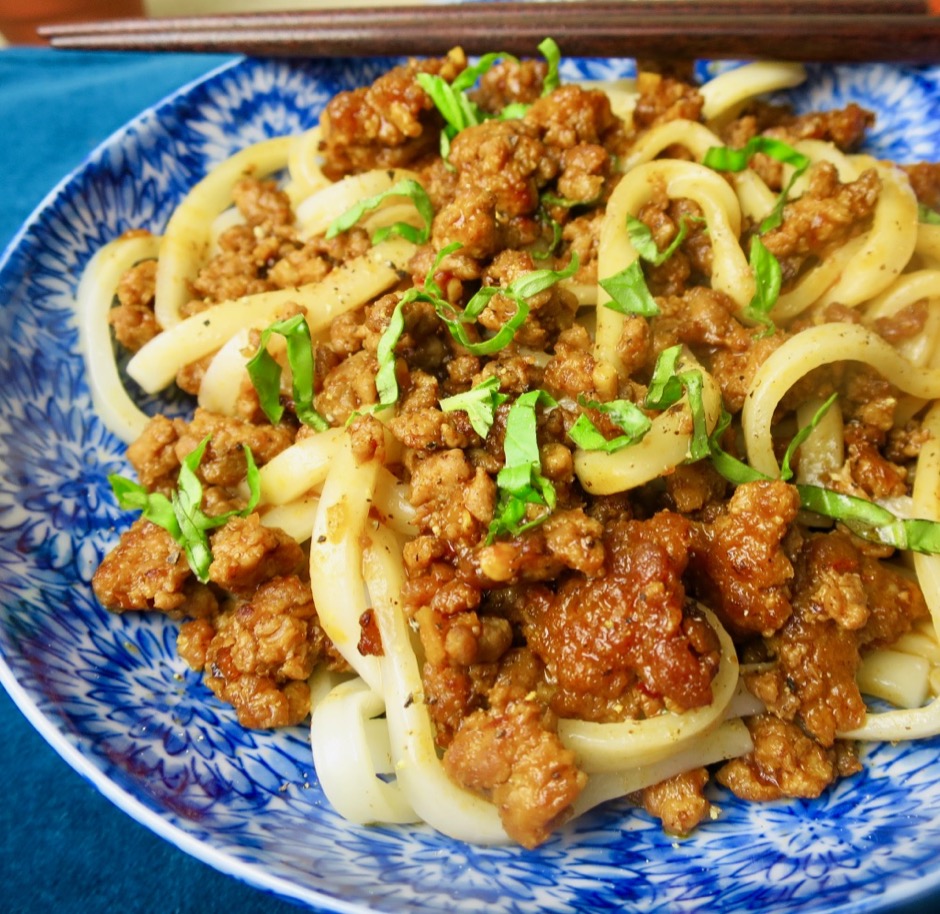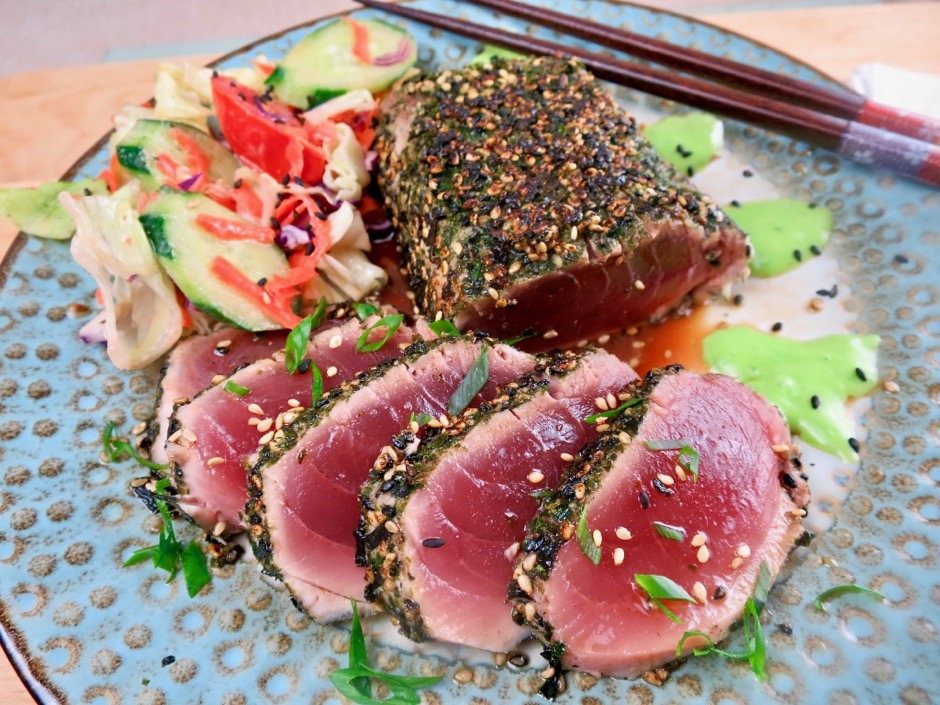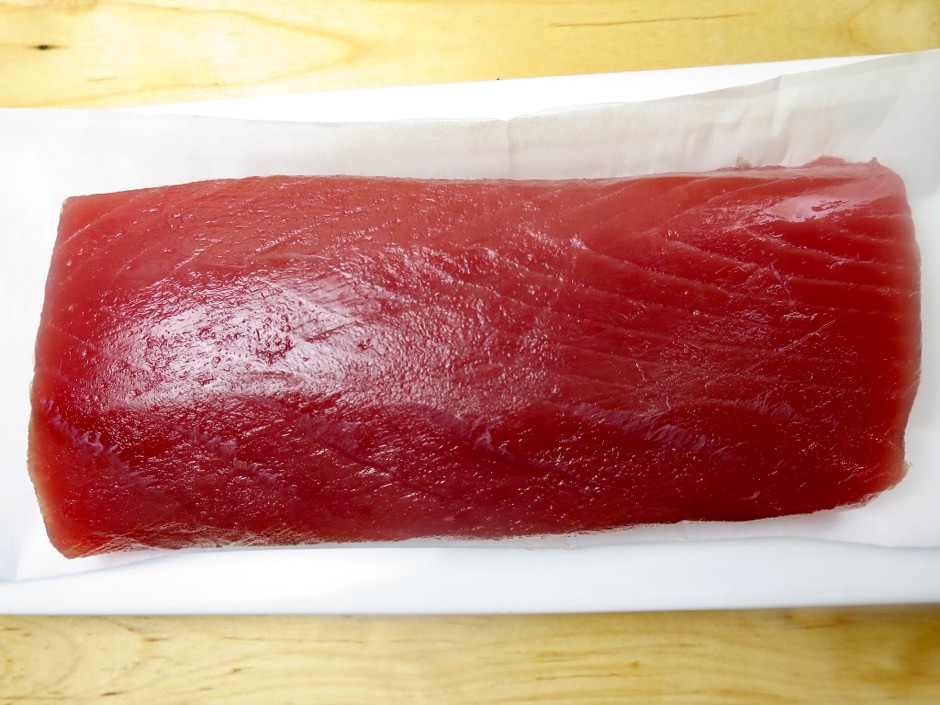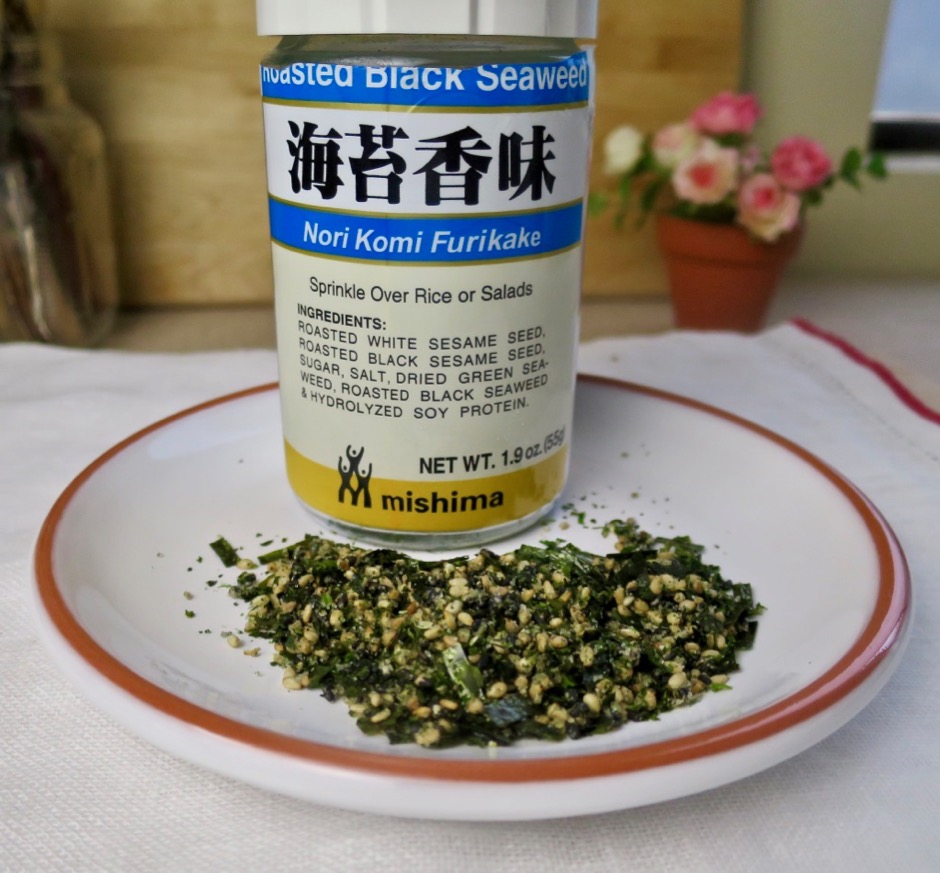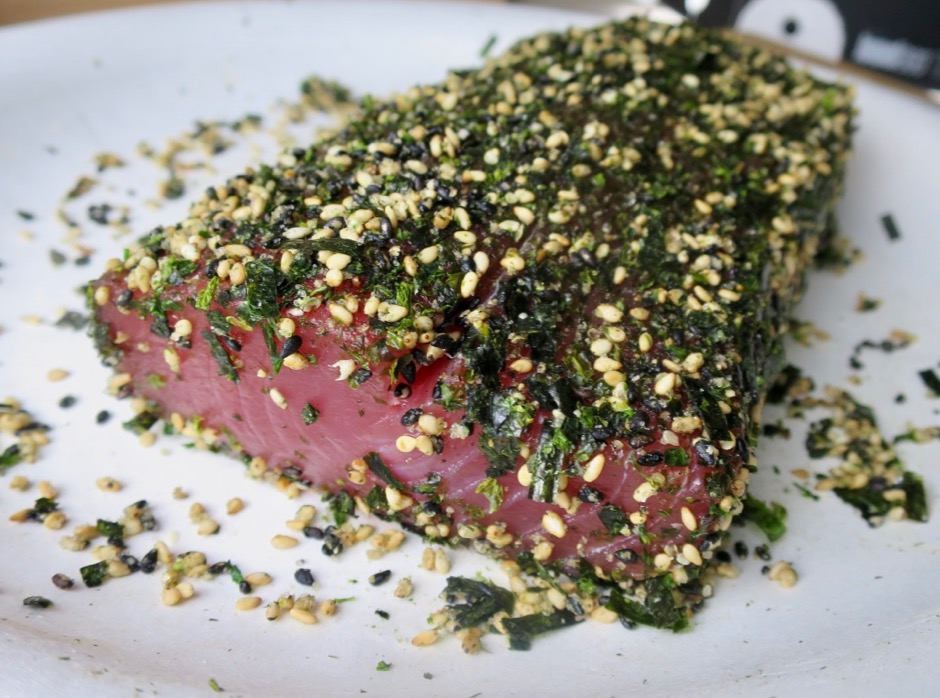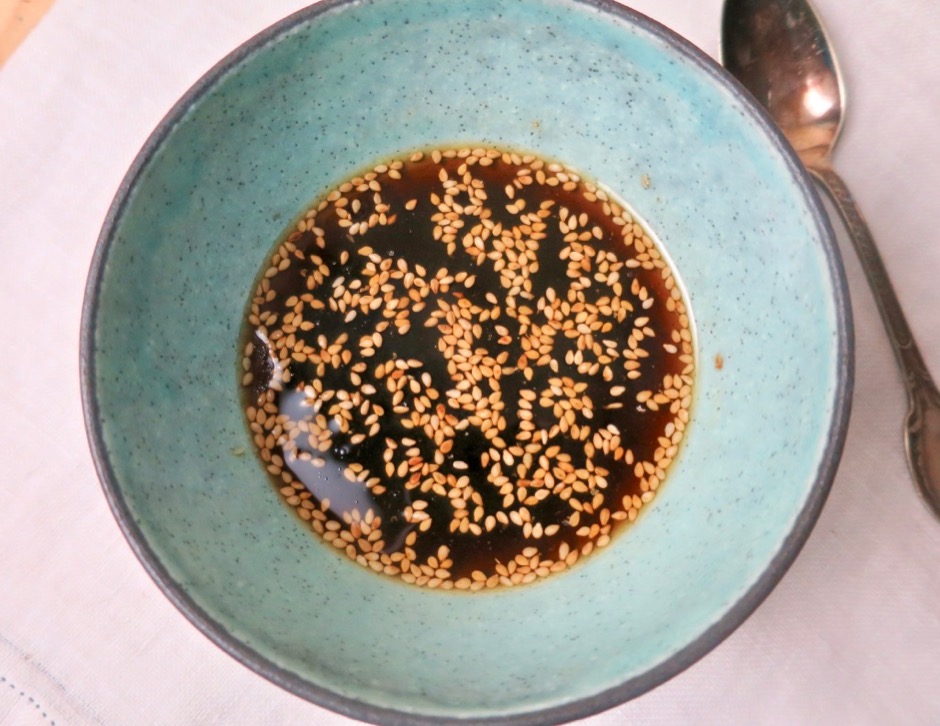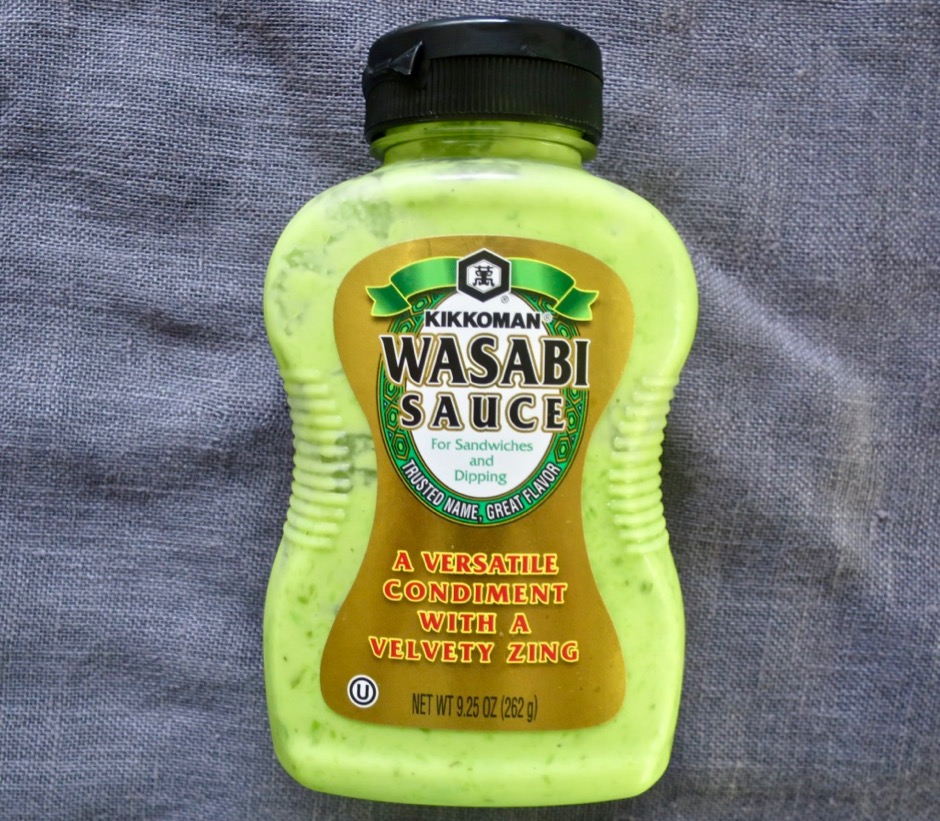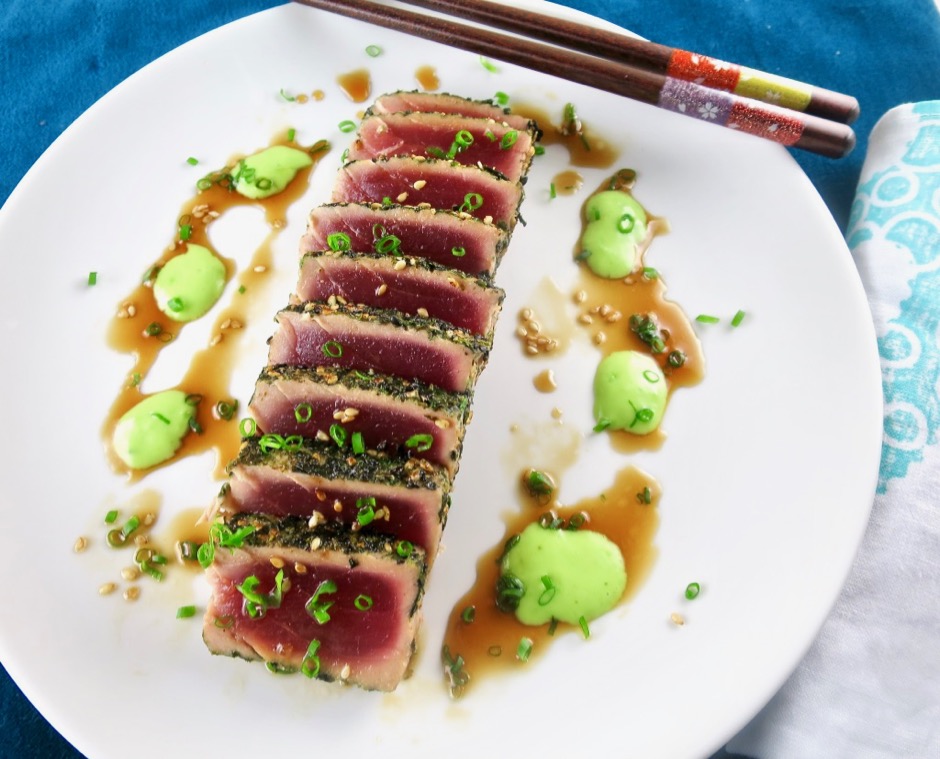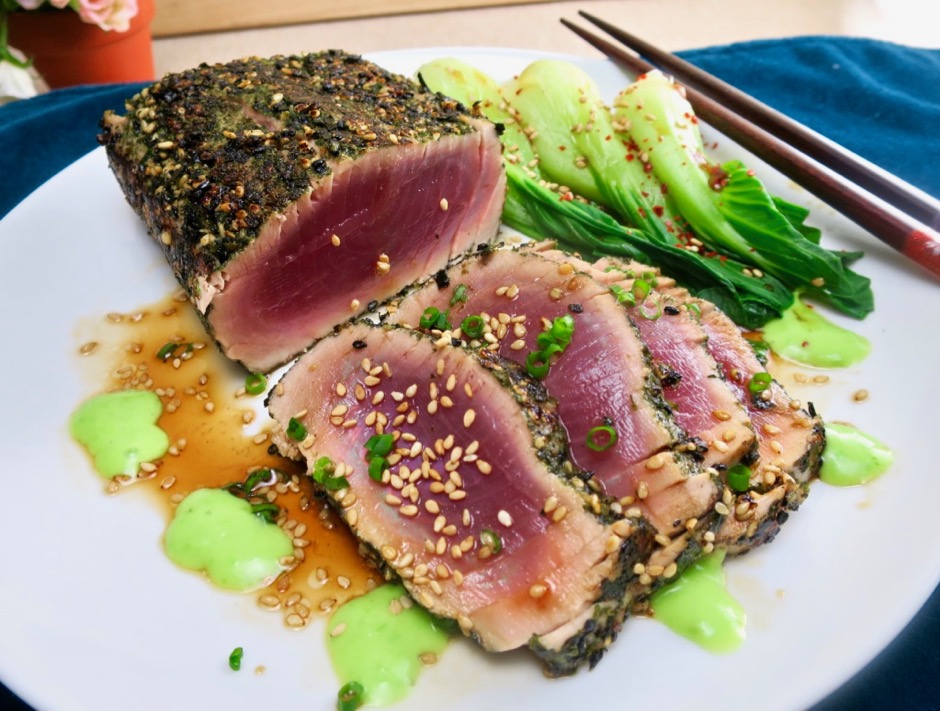I came across this recipe on the always interesting Serious Eats blog. It seems that instant ramen fried rice is the latest food craze in Japan. Everyone there has instant ramen in their cupboards, and so do many of us. This dish is inexpensive, perfect for single servings, and most of all so tasty.
I added some Bacon Spam to my ramen fried rice for an extra umami boost but you may omit it to make things simpler and quicker. For just one serving, use your favorite flavor of Cup Noodles instant ramen. I used Kimchi ramen since it was what I had available and it was perfect for the two of us.
Unlike many other ramen recipes that suggest you throw out the flavor packet and make your own soup, you’ll want to keep it this time. This is suppose to be a no fuss meal after all.
Crush the noodles into small pieces before adding the soup base and boiling water.
Pour just enough boiling water over the noodles and soup base to rehydrate the noodles. You don’t want to use too much water which would lead to soggy fried rice. Give the noodles and soup base a quick stir, cover and let sit for a few minutes.
With Spam (the unofficial state food of Hawaii), there are two options: either you like it (add it) or you loathe it (leave it out).
Almost any type of rice will work in this recipe. I used 2 cups of cooked short grain brown rice.
Since eggs are one of my favorite foods, I couldn’t resist frying up a couple of sunny side up eggs to eat with our ramen fried rice. A good drizzle of sriracha sauce is the ideal accompaniment for this satisfying meal. Oishii!
- 1 package (about 4.25 ounces) kimchi ramen
- 2 cups cooked short grain brown rice
- 2 eggs, lightly beaten
- 2 pieces Bacon Spam, diced small and fried until crisp (optional)
- 2 sunny side up eggs (optional)
- cilantro for sprinkling over fried rice (optional)
- Sriracha (optional)
- Crush ramen noodles and place in a bowl with soup base. Pour boiling water over noodles (just enough to barely cover the noodles) and give them a quick stir. Cover and rehydrate noodles while you continue with the recipe.
- Heat 2 tablespoons canola oil in a large (I use 11") non-stick skillet over medium-high heat. Once the oil is shimmering, add beaten eggs and scramble just until barely set. Add rice to the pan and heat through, breaking up any large lumps, about 1-2 minutes. Add cooked Spam cubes if using.
- Add noodles along with any liquid (you shouldn't have too much liquid left after rehydrating the ramen) to the rice and stir constantly until excess moisture has cooked off. Taste and season with salt if needed. Press the rice mixture in an even layer on the bottom and up the sides of the pan to allow crispy bits to form. Serve ramen fried rice with sunny side up eggs, cilantro, soy sauce and sriracha.


